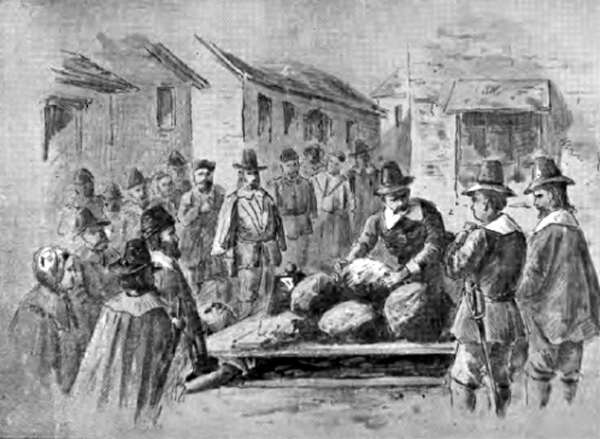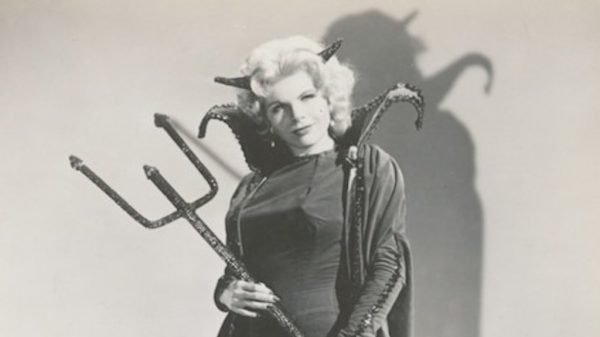One of the few male figures during the Salem Witch Trials of the 1600s was a man named Giles Corey. Born in England, Giles later immigrated to Massachusetts and became a prosperous farmer and a pious figure in the Salem church.
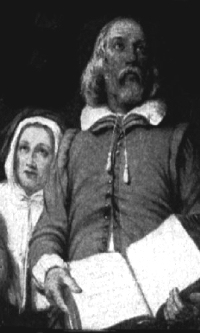
Martha & Giles Corey
By 1692, the trials had absorbed daily life in Salem. It wasn’t an uncommon sight to walk through town to fetch water or tend to one’s horses and see an assemblage of women being marched to the courthouse or gallows in shackles. The trials operated much like a reality TV show – fueled by rumors, gossip and heresy. Executions were made into public spectacles. Neighbors and business partners encountered conflict and resorted to accusing one another of witchcraft and Satanic worship. Few spoke out against the activity in fear they too would be accused and sentenced.
In March of 1692, Giles’ wife Martha Corey made the noble effort to publicly decry and challenge the claims against Salem women directly to both the townspeople and the Magistrates who decided their fate. Once the town caught word of her challenging the validity of the trials, several women came forth with accusations. A group of women led by another farmer’s wife named Ann Putnam claimed to have seen Martha breastfeeding a yellow bird, scratching at walls and praying to the Devil outside her window one evening while she ate dinner with her family. Martha was swiftly accused of witchcraft and sent to prison to await trial.
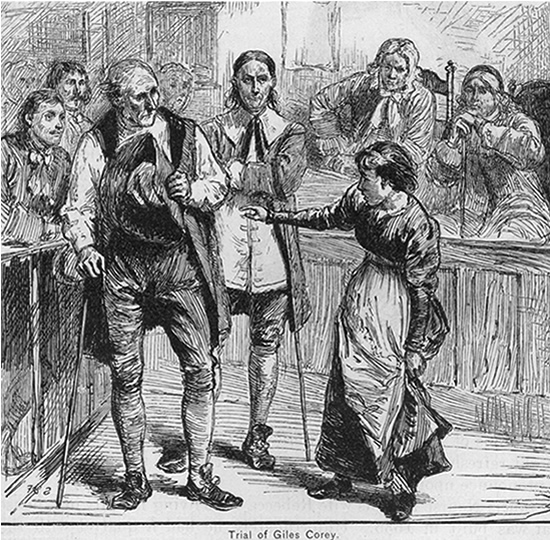
Ann Putnam testifying against Giles Corey in court during the Salem Witch Trails, 1692.
Giles immediately came to his wife’s side in court and argued her innocence, condemning the women who made the accusations against her. Unsurprisingly, the women countered with claims of Giles’ own witchcraft and Devil worship. The deciding claim came from one 19-year-old woman who said several ghosts had appeared before her at night claiming they were all murdered by Giles during Satanic rituals. Giles already had a reputation and was quietly feared by the townspeople after a previous run-in he had with the law. In 1676, Giles was brought to trial for beating Jacob Goodale, one of his indentured farm workers, to death after he caught him stealing apples from another farm belonging to his brother-in-law. He waited 10 days before taking Jacob to receive medical attention. Corey was fined and avoided jail time, but gained the fearful glances of passersby in his community.
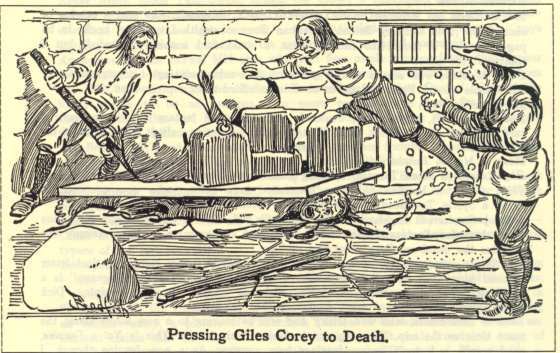
After Giles’ arrest, he joined Martha in jail for 5 months awaiting their trials. Giles received no education in his life, but knew how to work the New England justice system with finesse. Giles had a close relationship with his two sons-in-law from previous marriages, and wanted to entrust his property to them after his death. When brought to trial and told to plea guilty or not guilty, Giles knew that by even giving a plea would result in his land being seized by the government as stated by the law.
Giles, blessed with disgruntled savvy and unwavering bravery, pulled his first mic drop: total silence. Giles stood in the courthouse silent, and refused to enter any plea. The Magistrates sentenced him to be “pressed” until they literally squeezed a confession and a plea out of him.
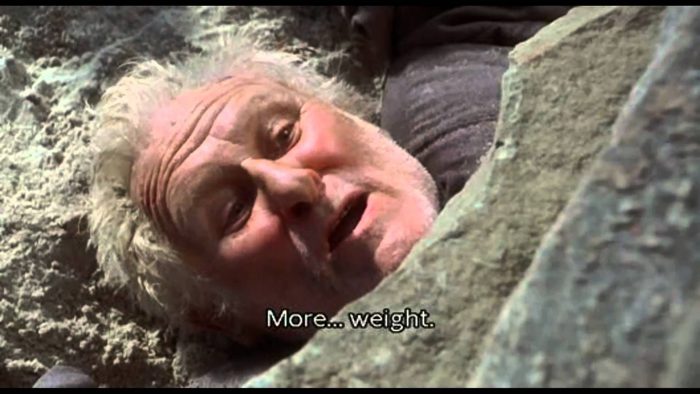
Giles as played by Peter Vaughan in the 1996 film “The Crucible”.
Giles is the only person in US history to have been executed by pressing. Most people were hung, burnt or drowned during the witch trial executions, but the government believed Giles’ unique stubbornness deserved something more torturous. A somewhat frail 80-year-old Giles Corey (yes, he was 80 at the time of his execution) was led from the courthouse outdoors, stripped naked in public and laid on his back on the ground. A plank of wood was set upon his body, with just his head exposed. Then, several heavy stones were set atop the plank of wood, gradually applying more crushing weight. They would place a large stone on top and wait for him to cry out a plea while threatening to add more. This, ladies and gentlemen, brings us to Giles Corey’s Salem Witch Trial Mic Drop:
“MORE. WEIGHT.”
For two days, the 80-year-old Giles laid beneath a plank and would bellow “MORE WEIGHT” each time a stone was added, or when ordered to enter a plea. Sometimes he would spit in the direction of the executioners and Magistrates, other times he laughed, as recorded by witnesses. After two days of pressing, his body finally succumbed to the brutality and his land and property were all given to his sons. Throughout his trial, he spoke out in defense of the women being persecuted – at his own expense – and never argued his own innocence. His body was taken to Gallows Hill in Salem and buried in a shallow grave. Today, you can visit his gravestone and see an ever-changing offering of flowers laid atop by those who believe him to be a martyr. There are reports of his ghost appearing in various parts of Salem, sometimes met with applause.
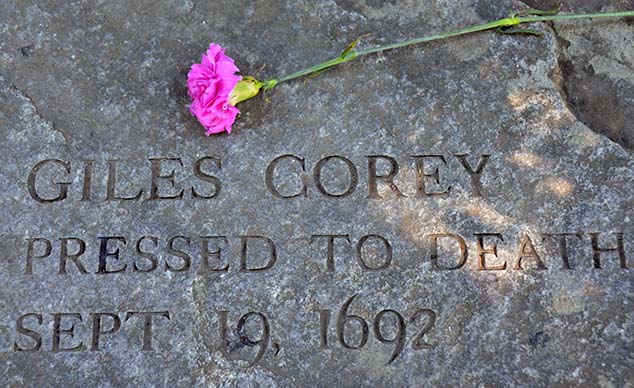
Giles Corey’s gravestone in Salem, MA.

